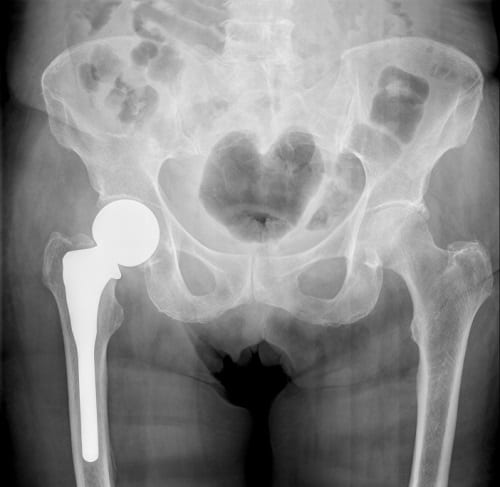Metallosis and Metal-on-Metal Hip Implants
FDA Issues Concerns Over Metal-on-Metal Hip Devices
 In 2017, the U.S. Food and Drug Administration (FDA) issued a release listing a number of concerns regarding metal-on-metal hip implants. The FDA reported that in addition to the general risks associated with all types of hip implants, metal-on-metal hip implants carry additional risks that are unique to them. These unique risks stem from the metal components of the implant rubbing against each other during movement. Tiny metal particles can wear off the implant and can cause damage to the tissue and/or bone surrounding the implant. Metal ions (usually cobalt and chromium) from the implant can also enter the bloodstream and lead to serious complications with the nervous system. People may have different reactions to any sort of metal buildup in their systems, causing the symptoms of metallosis to vary. The FDA recommends that people who experience any changes in general health should alert their doctor to the fact that they have a metal-on-metal hip implant.
In 2017, the U.S. Food and Drug Administration (FDA) issued a release listing a number of concerns regarding metal-on-metal hip implants. The FDA reported that in addition to the general risks associated with all types of hip implants, metal-on-metal hip implants carry additional risks that are unique to them. These unique risks stem from the metal components of the implant rubbing against each other during movement. Tiny metal particles can wear off the implant and can cause damage to the tissue and/or bone surrounding the implant. Metal ions (usually cobalt and chromium) from the implant can also enter the bloodstream and lead to serious complications with the nervous system. People may have different reactions to any sort of metal buildup in their systems, causing the symptoms of metallosis to vary. The FDA recommends that people who experience any changes in general health should alert their doctor to the fact that they have a metal-on-metal hip implant.
Start Your Free Case Review!
Metallosis Side Effects
Metal-on-metal hip replacements can cause metal ions to enter into bloodstream and create a condition called metallosis. Because these devices are made from a blend of several different metals, they can release metal particles into the blood stream and surrounding tissue when the metal parts rub against each other. A buildup of this type of metal in the body can be toxic, leading to serious complications affecting the nervous system, skin and other organs. Symptoms of metallosis can include:
- General hypersensitivity reaction (skin rash)
- Cardiomyopathy
- Neurological changes including sensory changes (auditory, or visual impairments)
- Psychological status change (including depression or cognitive impairment)
- Renal function impairment
- Thyroid dysfunction (including neck discomfort, fatigue, weight gain or feeling cold)
Other people have experienced pain, swelling, and joint dislocation. If you have a metal-on-metal hip implant and have experienced any of the side effects mentioned above or below, please call our firm:
- Implant Failure
- Revision Surgery
- Elevated levels of cobalt and/or chromium in the blood
- Diagnosis of metallosis
- Loosening of the device
AFFECTED BY A HIP REPLACEMENT?
Call Now! 1-800-710-3121
Metal-on-Metal Hip Implant Models
- Biomet M2a
- Biomet M2a-28mm
- Biomet M2a-38
- Biomet M2a-Exceed ABT
- Biomet M2a-Magnum
- Biomet M2a-Stanmore
- Biomet M2a-Taper
- DePuy ASR (2010 recall)
- DePuy Pinnacle
- Omni Apex K2
- Stryker Meridian
- Stryker Rejuvenate (2012 recall)
- Stryker TMZF Femoral Stem
- Wright Conserve Plus
- Wright Profemur Z
- Zimmer Durom Cup (2008 recall but returned to market)
- Zimmer Mayo Hip
- Zimmer M/L Taper
- Zimmer Versys
Are You Eligible for a Metal Hip Replacement Lawsuit?
The Feeney Law Firm is committed to seeking justice for those affected by metallosis caused by metal hip replacements. Fighting to keep people safe from corporate greed and self-interest is our passion. We are here to help make that process as simple as possible for you and your family. Call us now at 1-800-710-3121 for a FREE consultation. Don’t wait; your time to file a metal hip replacement lawsuit may be limited.
